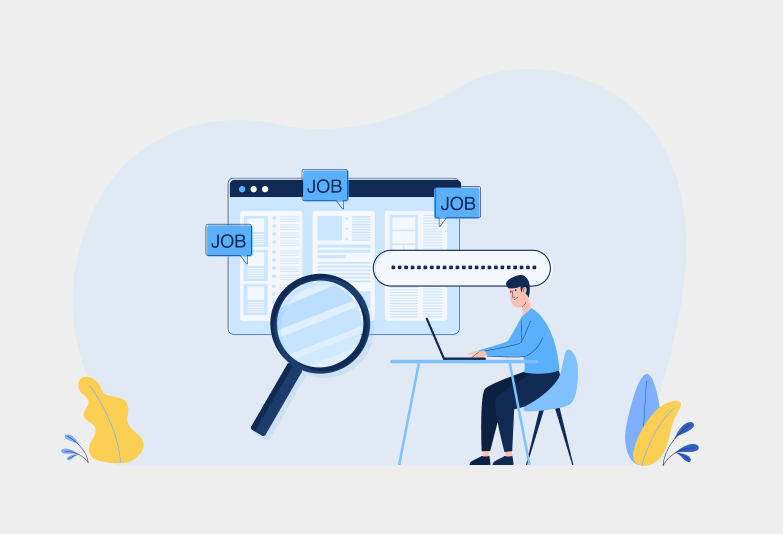A good hiring process flowchart is essential for companies. It helps you optimize recruitment. This approach helps organizations to be consistent and efficient in hiring. A good flowchart outlines detailed steps. It starts with finding job openings in your company and ends with onboarding new employees. You can track hiring and spot bottlenecks.
A recruitment process flowchart helps HR teams. It helps you decide better. This approach promotes clear communication and collaboration. It ensures that the recruitment team overlooks no step. Let’s understand how a flowchart can improve hiring and drive growth.
What Is a Recruitment Process Flowchart?
A hiring process flowchart is a visual roadmap to recruitment. It outlines easy-to-follow recruitment steps. They include finding hiring needs and onboarding new hires. The flowchart has stages: job posting, resume screening, and interviews. It provides a way to ensure a consistent hiring method.
An end-to-end recruitment process flowchart helps HR teams see the hiring steps clearly. It helps with communication and shows areas to improve. Breaking recruitment into smaller steps will help. It fosters a clear, organized way to find talent. The recruitment flowchart helps you pick the best candidates and strategies.
Why Does Your Business Need a Hiring Process Flowchart?
A talent acquisition process flowchart visually shows each stage of recruitment. It guides the recruiting team with structured stages. This ensures consistency, boosts efficiency, and helps optimize decision-making.
By outlining the recruitment process, organizations can improve hiring. It runs from job posting to onboarding new hires. This will reduce errors, enhance candidates’ experiences, and ensure compliance with company policies.
1. Provides Clarity on the Recruitment Journey
A recruitment process outsourcing flowchart clarifies the hiring process. It provides a visual roadmap to navigate each step. It covers every stage, from sourcing to onboarding. A clear visual ensures all stakeholders see the workflows. This reduces miscommunication and delays. Moreover, the recruitment flowchart minimizes time-to-fill job positions by up to 30%. It helps organizations acquire a qualified talent pool and reduces the impact of vacant positions on overall productivity.
Also, a recruitment flowchart boosts efficiency by helping to find delays and speed up decisions. It helps teams maintain consistency in the hiring process and ensures that every candidate is evaluated according to a standard process. A hiring flowchart speeds up finding and hiring new talent.
2. Maintains a Consistent Hiring Approach
A recruitment process flowchart standardizes each step. It ensures a consistent approach to recruiting by reducing errors and delays. It helps teams stay aligned with the company’s goals. This process improves candidate assessments. It ensures the HR team effectively follows the company’s policies and rules. This further provides a seamless experience for candidates and the HR team.
Also, a flowchart helps train new HR staff. It boosts teamwork and ensures the team manages all stages of recruitment. It also aligns the team on timelines and hiring practices. This supports long-term business growth.
3. Reduces Costs Per Hire
A recruiting process flowchart optimizes hiring by cutting out waste and saving time for each hire. You can spot and fix bottlenecks by mapping every hiring stage. This approach helps businesses avoid delays and save costs.
A clear visual guide or recruitment process flowchart should show the recruitment process. This prevents mistakes and repetitive tasks, allowing you to make timely and accurate decisions. A flowchart lowers hiring costs, improves recruitment, and aligns better with the organization’s goals.
4. Improves Decision Making
Using a hiring process flowchart can enhance decision-making for your organization. It gives a clear, visual map of the entire hiring process. It ensures that recruiters follow all stages and keeps them on track. Standardizing the hiring process can help. It cuts the risk of missing key steps, like screenings or interviews. It also ensures a complete review of each candidate.
Additionally, the recruitment flowchart improves transparency and communication among team members. Each team member can track the candidate’s progress and key decisions. This allows for quick, informed decisions. Visualizing the hiring process helps the HR team. It reduces confusion, boosts collaboration, and cuts miscommunication, driving better results.
5. Enhances Candidate Experience
Organizations can improve candidate experience by providing clear paths in the hiring process. This will allow candidates to better understand the hiring steps. It further reduces confusion and sets accurate expectations. Recruitment process flowcharts boost transparency and engage candidates, boosting a company’s image.
A good recruitment flowchart improves communication between candidates and recruiters. It keeps team members and candidates updated on time. This makes your hiring process more efficient for future cycles. Moreover, a streamlined flowchart shows that your company values candidates’ time and improves their experience.
Conclusion
A hiring process flowchart shows the steps to recruit new employees. It includes job posting, screening, and onboarding. It ensures that we miss no aspect and clarifies roles and responsibilities. Using a flowchart in hiring can help attract the right talent!
Sign up for Jobsoid to streamline your hiring, boost efficiency, and improve decision-making.

 Dhara Prajapati
Dhara Prajapati 

